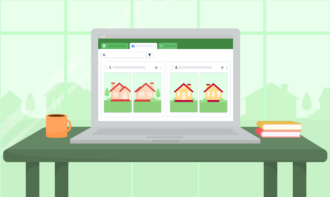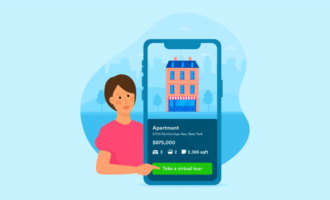Creating a real estate sales funnel
- Design the overall strategy
- Select a digital tool
- Maintain communication with leads and clients
Choosing a real estate agent is a personal decision, which is why many homeowners are hesitant to sign a service contract during the first meeting. How do agents build trust so homeowners will engage their services?
Successful real estate agents understand the importance of nurturing their leads to keep a steady flow of clients. After all, more clients mean more transactions and profit throughout the year.
A sales funnel is essentially the process potential clients move through on their way to signing a contract. It takes a bit of work to set up a real estate sales funnel, but it’s worth the effort — it can really boost your business.
And the good news is, with the right automation solutions, you can build relationships with potential leads and minimize busywork at the same time. The right tools can provide you with integrated information to ensure you keep the lines of communication open every step of the way.
Here are a few things to consider as you set up your real estate funnel.
Step 1: Design the overall strategy
When someone new expresses interest in your services, what steps will they go through as they move from being interested in your services to contracting with you? Map out the process you want to follow to build a relationship with each person in the funnel.
Consider the step-by-step process clients take during different stages of the sales cycle. Use forms to collect information about the listing, client preferences, and other unique details to ensure you can meet each homeowner’s needs.
Most sales funnels include these steps:
- Lead capture. This is the first point of contact with a lead coming from an outside resource, such as social media, search results, referrals, or paid advertisements. Lead capture gathers information about the potential client. You need to know how to get in touch with the person in the future, which is why your initial form must include a field for a phone number and/or email address.
- Sales process. As the person moves through your funnel, focus on communicating with them and gathering information about their needs and preferences. During the sales process, you can build trust and walk each person through the next steps in moving forward with buying or selling a home.
- Contracts and offers. When the lead is ready to move forward, finalize an agreement for your real estate services. You can use a form with e-signature capabilities for that. Forms can also help coordinate offers and documentation as needed.
- The closed deal. Finally, there are options for using digital forms to finalize the deal. The closing process is often complicated and stressful, but if you set up your funnel well, you can create a step-by-step system to gather necessary information at the right time.
While most sales funnels focus only on leads, you can create a system to onboard new clients and manage ongoing services. Simplify this process so you can save time and optimize the overall results for homeowners.
Step 2: Select a digital tool
Investing in the right software makes it easy to create a real estate sales funnel. Using a drag-and-drop tool allows you to customize your forms without needing to do any coding or have specific technical expertise.
Jotform offers a variety of real estate forms that enable you to quickly create a personalized real estate sales funnel:
- Property listing inquiry
- Buyer information form
- Seller real estate listing form
- Real estate contact form
- Open house sign-in form
Jotform also offers forms for a variety of other real estate needs — such as for home inspectors, property managers, and landlords.
In addition to helping you gather information from buyers, sellers, and industry contacts, Jotform provides solutions for managing the data you collect. Submissions to these forms will automatically populate the connected table, allowing you to manage and analyze the information in a single database.
Step 3: Maintain communication with leads and clients
Collecting information from leads and clients is just the first step. Make sure your real estate funnel includes follow-up to nurture your relationship with each person. For example, a series of onboarding emails can help you maintain communication.The fact is, 80 percent of sales happen after at least five points of contact from the initial meeting. Following up helps you stay connected with leads, encouraging them to sign an agent agreement so you can begin the process of assisting them in buying or selling a home.



















Send Comment: